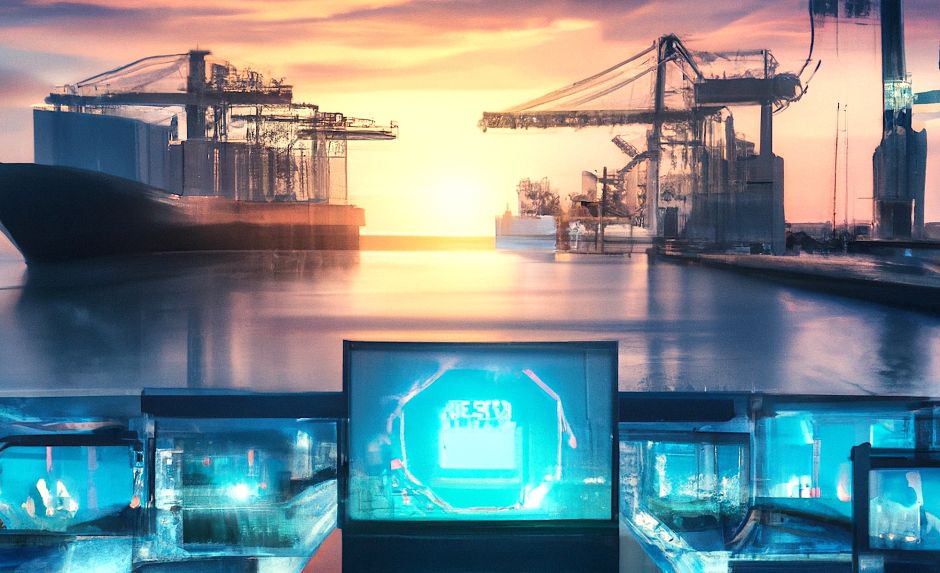The Maritime Industry is Prepared to Take on Higher Cyber Risks to Drive Innovation

According to a new report from DNV, over 60 percent of professionals in the maritime sector believe that increased cyber risks should be accepted as part of digitalization, as long as it enables innovation and technological advancements. The sector’s willingness to assume these emerging risks is significantly higher than in other critical infrastructures, such as energy, manufacturing, and healthcare.
The sector's readiness to take on cyber risks aligns with a growing need to manage more vulnerabilities. In DNV's new report, Maritime Cyber Priority 2024/25: Managing Cyber Risk to Enable Innovation, 71 percent of the 500 interviewed professionals reported that their organizations are more exposed to cyberattacks than before. An equal share indicated that their management sees cybersecurity as the greatest threat to their operations.
“In the maritime industry, we must match our ambitions for digital transformation and decarbonization with a steadfast commitment to securing our people, the vessels and the systems we rely on,” said Knut Ørbeck-Nilssen, CEO Maritime at DNV, in a press release.
“Cyber-attacks represent a growing threat to the safety of the maritime industry today. We can innovate, progress, and take a lead in ensuring the resilience of our businesses and societies, but only if we truly manage cyber risk.”
Opportunities and Vulnerabilities of Digitalization
As the maritime industry transforms to become greener, safer, and more efficient, players like shipping companies, ports, and suppliers are becoming increasingly reliant on connected digital technology. Industry representatives highlight advanced data analytics, IoT (Internet of Things), AI and machine learning, high-bandwidth satellite communication, and autonomous operations as major opportunities in the coming years. However, alongside these opportunities, vulnerability to cyberattacks also increases. The interviewees, however, trust that the industry is managing these risks well. More than eight in ten (83%) stated that their organizations have a strong cybersecurity posture, and seven in ten (71%) are confident that their operations could quickly recover from a cyberattack.
Increased Investments in Cybersecurity but Some False Confidence
One contributing factor to this sense of security is that nearly three-quarters (73%) of respondents reported that their organizations are increasing cybersecurity investments compared to the previous year. A majority stated that their companies are prepared for various risks, such as downtime, operational disruptions, sensitive information theft, physical damage, and the risk of vessels being stranded.
Despite a heightened awareness of the risks and increased cybersecurity investments, there are signs of false confidence within the industry. Only half of the respondents are confident that their organization has full insight into the vulnerabilities of the supply chain, which is concerning given the rising cyberattacks targeting supply chains. Three-quarters also believe that their organization’s cybersecurity training is not advanced enough to handle sophisticated threats.
“Organizations may feel prepared because more resources are being dedicated to managing cyber risks, but the reality is more complex,” said Svante Einarsson, Head of Cybersecurity at DNV Cyber.
Crime and Geopolitical Concerns Amplify the Cyber Threat
There is also growing concern—not just due to geopolitical instability, but also because of rising criminal activity, particularly from criminal gangs that see significant profit potential in ransomware attacks. Eighty percent of respondents were worried about this, compared to 56 percent in 2023.
The report identifies four key cybersecurity challenges for the maritime sector. These involve:
- Ensuring access to expert resources that can integrate cybersecurity into the design of new systems and vessels.
- Improving the ability to detect and respond to incidents to minimize impacts on marine operational technology (OT) systems.
- Clarifying roles, responsibilities, and resources to continuously manage OT cybersecurity both onboard and onshore.
- Protecting the numerous dependencies and components in complex supply chains.
Download the report Maritime Cyber Priority 2024/25: Managing Cyber Risk to Enable Innovation.
-
 Ny studie: Eldrivna pendelbåtar kan effektivisera Stockholms kollektivtrafik
Ny studie: Eldrivna pendelbåtar kan effektivisera Stockholms kollektivtrafik -
 Sjöfartens utsläpp ökar
Sjöfartens utsläpp ökar -
 Sociala relationer påverkar val av bränsle
Sociala relationer påverkar val av bränsle -
 Sjöfartens omställning kräver ”mjukare” påtryckningar
Sjöfartens omställning kräver ”mjukare” påtryckningar -
 Hon hade avtalad tid med Kapten ynkrygg
Hon hade avtalad tid med Kapten ynkrygg -
 Lighthouse omvärldsanalys 2025 – osäkerhet och tullar präglar sjöfarten
Lighthouse omvärldsanalys 2025 – osäkerhet och tullar präglar sjöfarten -
 Se seminariet Shipping in the Marine Environment
Se seminariet Shipping in the Marine Environment -
 Vad betyder egentligen de 90 procenten?
Vad betyder egentligen de 90 procenten? -
 Hålla där...
Hålla där... -
 Ny rapport: Klimatförändringarna ett hot mot de flesta större hamnar i världen
Ny rapport: Klimatförändringarna ett hot mot de flesta större hamnar i världen

